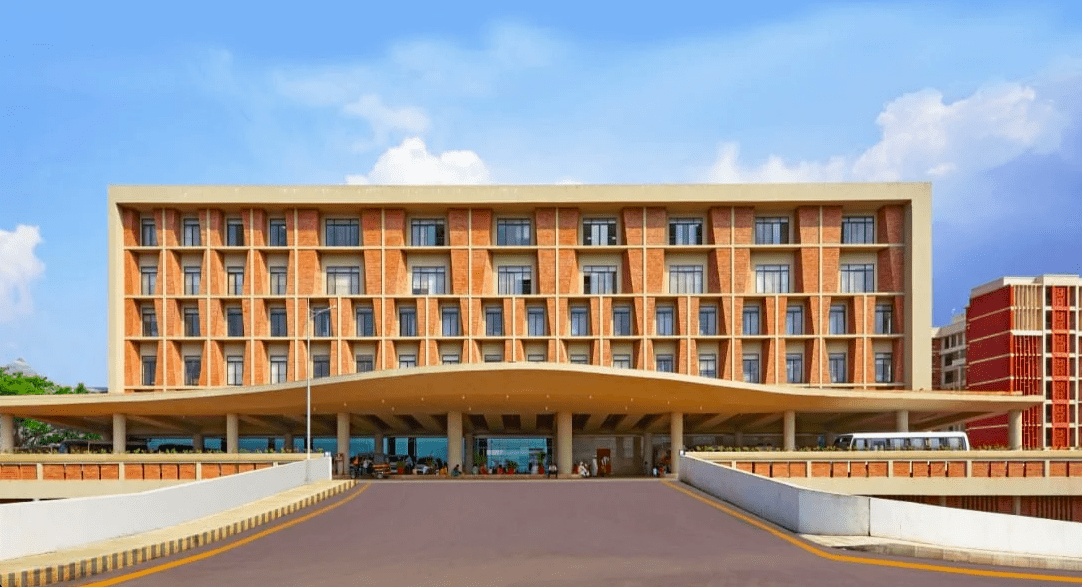Mumbai Architect’s traditional Jali designs in hospitals make a case for green buildings

Winning the Surface Design Awards, London, for designing the Symbiosis University Hospital and Research Centre (SUHRC) in Lavale, Pune, the geometric jaali designs of Rahul Kadri’s IMK Architects set a prototype for green building.
If one is fond of art and interiors, one can’t afford to miss the perforated patterns that grace mosques, madrasas, and palaces around the world. The mathematical elegance of these designs regardless of their intricacies are always based on grids constructed using only a ruler and a pair of compasses.
Inspired from the notion of biophilia—an innate human tendency to seek connections with nature and other forms of life, Rahul Kadri’s Mumbai-based firm, IMK Architects, founded and named after his father—the firm designed the state-of-the-art architectural finesse from sundried earthen bricks and used double-skinned facade, cavity walls, and jaalis to stave off internal heating, enhancing thermal comfort and slashing overall energy consumption.
According to Rahul, the firm’s design philosophy is based on Biophilic Architecture that incorporates factors like natural lighting and ventilation. All the designs provide vibrant and warm spaces by focussing on social consciousness and urban ecological sensitivity. The principles of efficiency, sustainability and people-centric design have always been the mainstay of work.

Flourished in the newly independent India, in 1957, the firm has always been ahead of its time when it comes to using eco-friendly practices in their designs. The architectural firm has built more than 150 buildings across four countries such as Shivsagar Estate and Nehru Centre in Mumbai, Kowloon Mosque in Hong Kong, Lake Palace Hotel in Udaipur, The Oberoi and Kashmir University Projects in Srinagar to name a few noted ones.
The use of Compressed Sun-dried Earth Brick (CSEB), a low-cost alternative and a carbon-neutral building material is one of the noted highlights of the project that reduces transportation cost and carbon footprints. The bricks are made from a mixture of reused soils like red soil, sand, and murum and stabilized with 7 per cent cement for better durability.
They hired the local masons for making use of sundried Bricks as opposed to kiln-fired which makes it an eco-friendly process. In the interiors, smaller details have been taken into account to ensure a calm and serene atmosphere that promotes healing while encouraging research and creating spaces that are easy to use and maintenance-free.
Somewhere down history, these perforated walls, also called as jaalis are common patterns in all Indian temples, Middle Eastern mosques, African huts or Cambodian monasteries. During these days of solid walls, this global use of jaali walls is only a reminder of a revival of heritage and neglected green sense.
